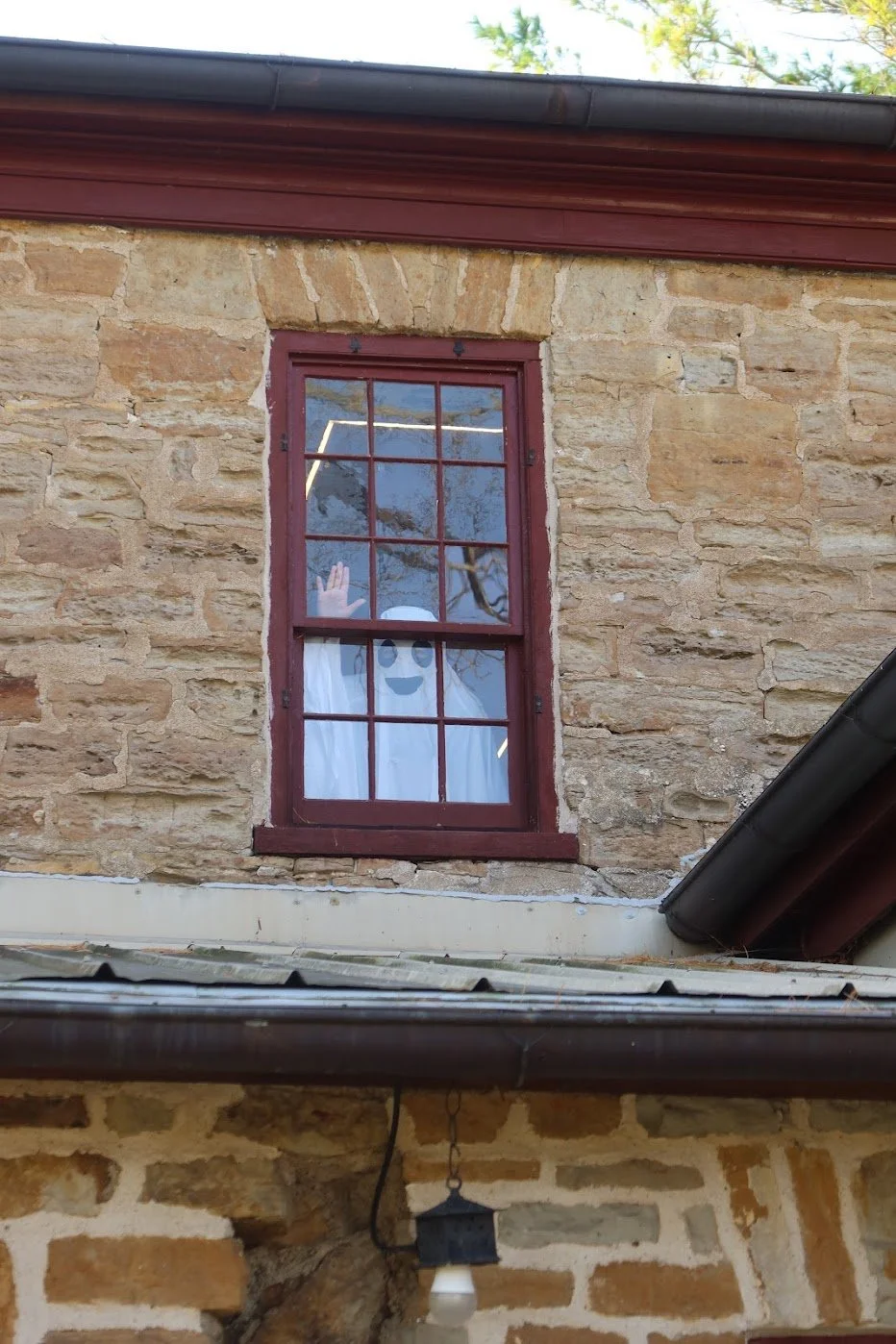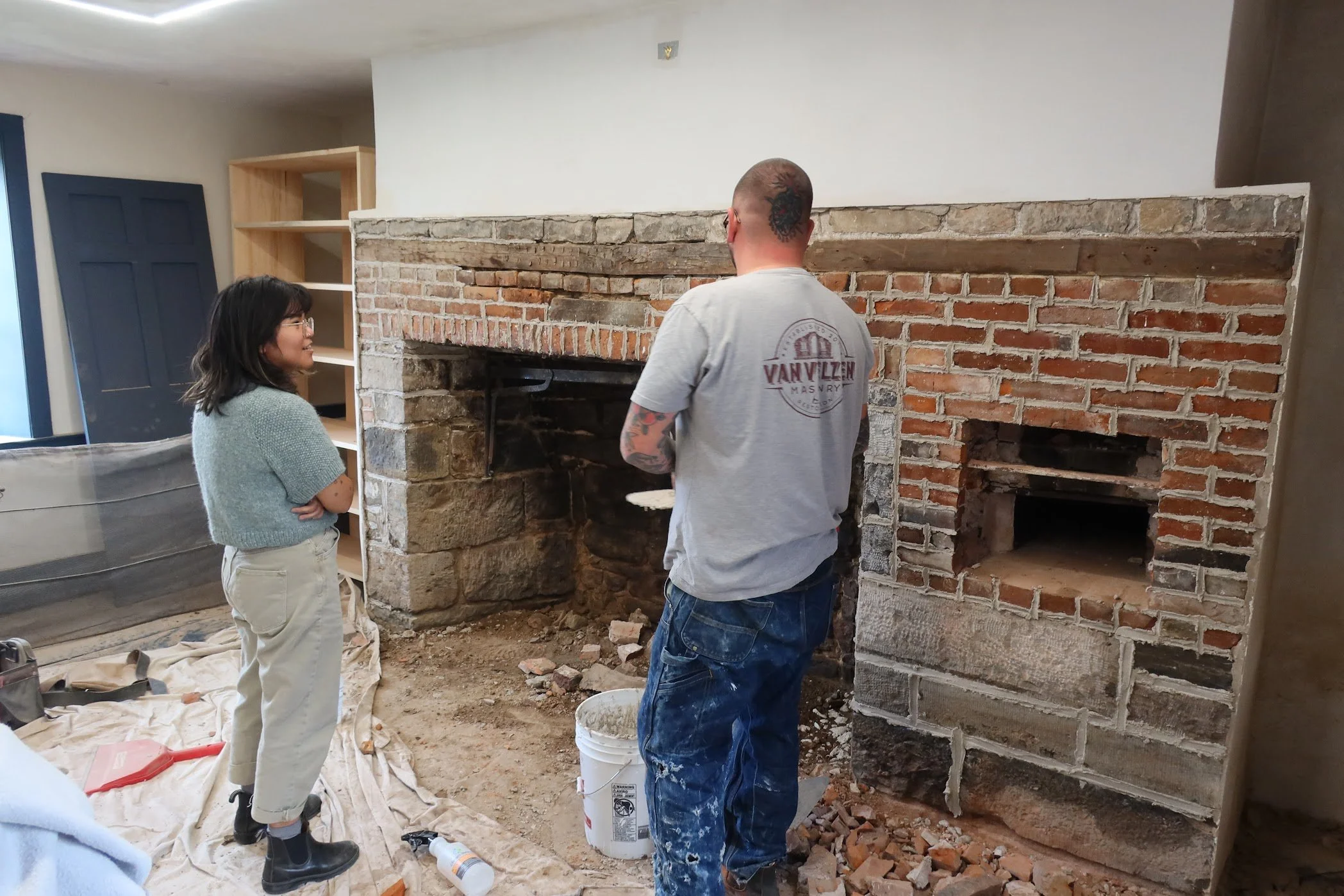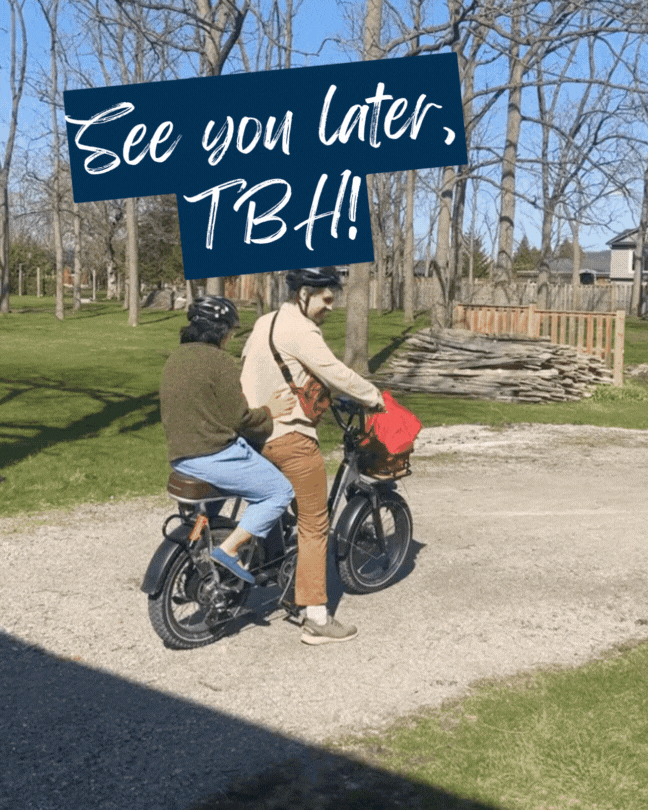An Ode to Operations
Managing a museum or heritage building is no small feat—yet the people who keep these spaces operating smoothly often work behind-the-scenes, far from the spotlight. Our outgoing Operations Manager, Pam Dungao, reflects on the complexities and challenges of managing the site of the oldest home in St. Catharines. From keeping historic infrastructure safe and accessible, to the very contemporary responsibilities of updating our Wi-Fi and HVAC systems, Pam’s day-to-day work is complex, relentless, and critical to the operation of The Brown Homestead. This piece is Pam’s tribute to her time here, but also to the unsung heroes of the heritage world —the backbone of any cultural site—whose work ensures everything from public programming to adaptive reuse projects run smoothly. Thank you, Pam for all your contributions to The Brown Homestead! We will miss you!
When I think of the first time I stepped foot in The Brown Homestead, I remember how bright the entrance hallway looked.
Don’t worry folks, it’s not a real ghost in the John Brown House - just outgoing Operations Manager Pam Dungao dressed for Halloween! The Brown Homestead, 2024.
I have visited many historic house museums. They always come up as a great addition to any tourist itinerary when visiting a new place if the open hours line-up well with your availability. It has always been the way I like to travel – explore aimlessly, have a mid-day drink, visit a local old house museum and catch a glimpse of a past life behind a velvet rope barrier. There is often old furniture (some original to the space, some are similar enough to what the owners would have had) displayed like a diorama of a past domestic life. Oftentimes, these places are dimly lit, relying on daylight or on outdated electrical and halogen bulbs. There is dust that settles on any flat surface of the room and the lingering scent of an old house (musty, earthy, damp) that you become blind to the more rooms you enter.
This is not the case at The Homestead. Above me, the ceiling was flushed with an LED strip. A low-profile addition that adds so much efficient light to the space. Below, the flooring was recently painted, the colours were deeper in pigment, brighter. Straight ahead, I didn’t see a furniture display that mimicked a Georgian house entrance behind a rope barrier. Instead there was a table decorated with bookmarks, postcards with images capturing different details and angles of the site, and a sign-up sheet. The oldest furniture in that hallway is a wooden hutch with an acrylic stand-up sign of the Wi-Fi network access information.
Truthfully, I didn’t think much of this first encounter I had with the space until now. In hindsight, I now see these as subtle markers that signify one thing – The Homestead is different.
Site Management Mantra: Adapt & Overcome
I am the Operations Manager at The Brown Homestead. It has been two years since I first stepped foot here. Since then, I have come to know the site intimately in the way one comes to know their own home. Part of my job is ensuring that all the internal and mechanical systems in place are running smoothly so that the site can be what the rest of the team needs it to be – an office, a workshop, a classroom, a private event rental, an on-going rehabilitation project.
This adaptability is not new to the site itself. There are traces of it in the site’s history. While it has always been a farming property, it was also a tavern, a stagecoach stop, a supply depot during the War of 1812, and a military training site for soldiers during World War I. Beyond that, it was also a playground for the children of the families that have lived here. Bedrooms were added. Wallpaper layered on top of each other. A garage built to welcome a new era of transportation. Electricity was added and eventually updated. The site has always adapted to the needs of the families that have lived here and in its present moment, it is still learning to adapt and continue to transform to fit our present needs.
Pam learns how to repoint masonry from heritage mason Patrick Van Velzen. The Brown Homestead, 2023.
I love my job because no two days are truly the same. The site keeps me on my toes. Some days, I’m a Database Designer. A Policy Pundit. The Expenses Expert. Other days, I’m a Mechanical Maven. A Wi-Fi Wrangler! During those days, I’m fighting against all the interior plaster and lath, the three-feet limestone exterior walls, and the remoteness of the site’s location to make sure that all our Bluetooth connected speakers are all working in-sync and can be managed via a tablet. It is frustrating when things do not work. It is marvelous when it does! I always get a kick saying, “We’re pretty high-tech for an old house,” because in spite of the building’s protest, we have managed to bring this 18th century house into the 21st century.
How We Approach Historic Site Management Matters
A year ago, I attended the Ontario Heritage Conference held in Gravenhurst with Sara and Jess, made possible through the Niagara Community Foundation Mini Grant.
The 2024 conference theme was “Community Embracing Heritage” with conference attendees made up of people working in the heritage sector in different capacities. There were architects, engineers, and planners. Others were members of their local municipality’s heritage committee. These are individuals who were passionate about preserving the history and built heritage of their own communities. They didn’t necessarily have the background and expertise of an architect or an engineer or a historian, but they were curious and eager to volunteer their time and their efforts to serve their community. These are communities that are not unlike St. Catharines. Small municipalities with limited funding. They yearned for more resources and more tools, asking the same questions over and over again: How do you find it? Where do you find it?
I attended the conference from the stand-point of being in the Department of Operations, choosing topics in the conference program that pertain to heritage property ownership, restoration, and building maintenance. (Very important!) But I left with so much more, including a better understanding of where The Homestead is situated within the broader heritage sector. Beyond the updated LED lighting and electrical work inside the oldest house in St. Catharines, beyond our approach in the adaptive restoration of a site that holds over 200 years of history, in a fundamental way, we operate differently.
One of my favourite episodes of The Open Door podcast is Season 1, Episode 3, “Anarchy 2.0,” where Andrew’s conversation with author of The Anarchist’s Guide to the Historic House Museum, Franklin Vagnone, sheds light to how radical approaches to reimagining how the historic house museum operates and engages with the community is crucial to its survival. On one hand, this radical approach can be staff adapting to the use of new technology and software to be able to continue working amidst the pandemic. On the other, it is about seeing the importance of collecting data and seeing how the numbers add up operationally so that they can continue to address the present needs of their community like food insecurity during a time of crisis. This radical approach places value in resources, funding and finances, and ultimately, care for its staff, volunteers, and visitors in the same way it has long prioritised architectural details and artifacts. Franklin Vagnone’s work has guided Andrew and Jennifer (our founders’) work in the earlier days of The Brown Homestead and I see how it has continued to inform how we operate, internally and externally.
Pam helps build The Brown Homestead greenhouse along with Sara and other volunteers. The Brown Homestead, 2024.
While most historic house museums rely on the sole commitment of volunteers because of limited funding and resources, The Brown Homestead is made up of a dedicated and talented group of volunteers and staff. Indeed, our volunteers are crucial in helping us deliver many of our programs and events, both on-site and off-site. They care for our community garden to help us continue the site’s legacy of feeding and sustaining for our community. They are integral in helping us share the many layered stories of the site. They help us carry the responsibility as stewards of care for The Homestead. Behind the scenes, the staff play an equally crucial role in the detailed development and planning of many projects that encourage community engagement with local history and cultural heritage in new and innovative ways. Logistically, the staff ensures that we are operational, all-year around, and easily accessible to the broader community. With the staff, we make sure that there is always someone on-site and the door is always open at The Homestead.
These two components of the organization are synchronous. At the core of it, we’re all visionaries. We support each other. We help each other succeed. We play a vital role in ensuring a sustainable model for The Homestead’s future.
As I put my Expenses Expert hat on, I know what you are probably itching to ask: How is the Homestead funded? Where does all the money come from? How are you paying the staff? To start, descendants of the Brown family helped establish an endowment fund which helped start the rehabilitative work of the site and build a foundation for the organization. Today, we are an independent charitable organization. We are not government funded and rely on fundraising through grants and donations from the community to continue our work. (If you have made it this far, please consider donating!)
I remember the drive back from Gravenhurst to St. Catharines and reflecting on what The Homestead can offer the heritage community in return. We have the staff capacity and the operational resources to educate, to start conversations, and to provide guidance within our community in the Niagara region and eventually, beyond it.
Operations Provides the Scaffolding
Pam and Theresa stop for a quick picture during our annual Trivia Night Fundraiser, which Pam led the organizing for each year. The Brown Homestead, 2025.
In many ways, the Department of Operations is its own entity with its own function. If we think of the organization as a structure, it is the department that provides a scaffolding. The foundation of this structure is built on a strong set of values, a vibrant vision, and a clear mission. As the scaffolding it provides structure and enables every part of the organization to function effectively and safely. It is flexible, adaptive, and supportive all at once in order to catch up with growth, to scale up, and to navigate the complexity and unpredictability of the future. But it is also a department that extends beyond the job titles that fit within its umbrella (i.e. Operations Manager, Operations Coordinator, Project Manager, Site Caretaker, etc.) and involves other departments and groups within the organization. It includes our Board of Directors, the Leadership Team, and our dedicated and wonderful volunteers. It is the piece that holds everything in place even when you don’t see it.
See you later, Pam! We’ll miss you!
My tenure at The Homestead is ending at the end of July. It is hard to believe that it has been two years since I first walked into the front door and stepped foot in The Homestead. I feel like I have lived so many lives here. It is a place that allowed me to challenge my curiosity and to explore what I wanted to do and what I wanted to grow into in my role within the organization. In The Homestead, I learned that caring for a site is not dissimilar to caring for your community: when you are attentive and proactive in caring for it, it will thrive.
I will miss The Homestead (both the site and the people) as my husband and I venture to new experiences in a new place. But I know that it will be okay without me because its scaffolding is strong enough to withstand any and all of the changes that may come its way.
For those considering a career in the heritage field, don’t dismiss a role in operations or site management! There are resources and education out there for historic buildings management, including through the Ontario Museum Association’s Certificate in Museum Studies. We hope that Pam’s Ode to Operations offers both insight and inspiration, and we are pleased to welcome our new wearer-of-all-hats Ashley Andrews to take up the torch.






